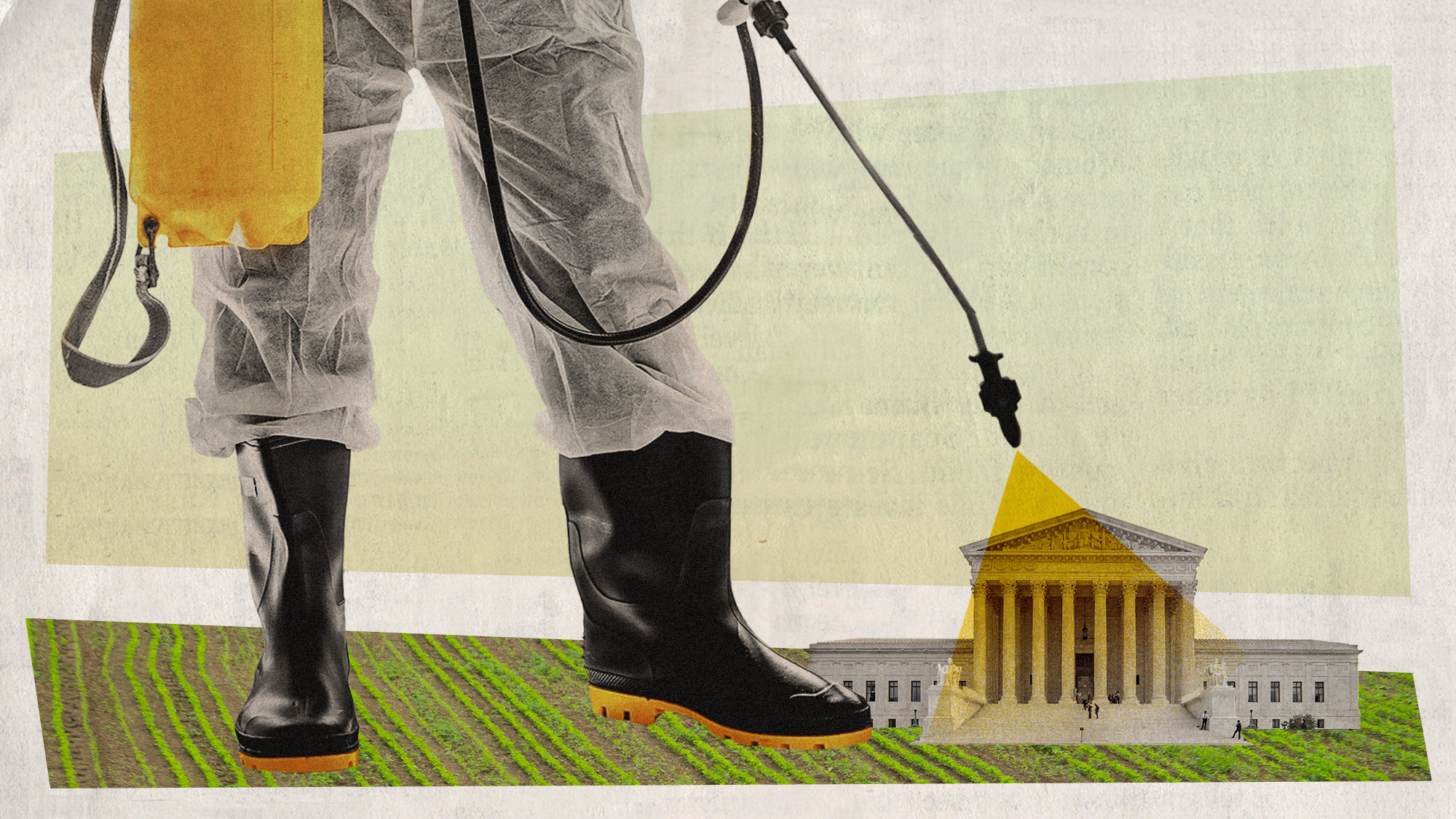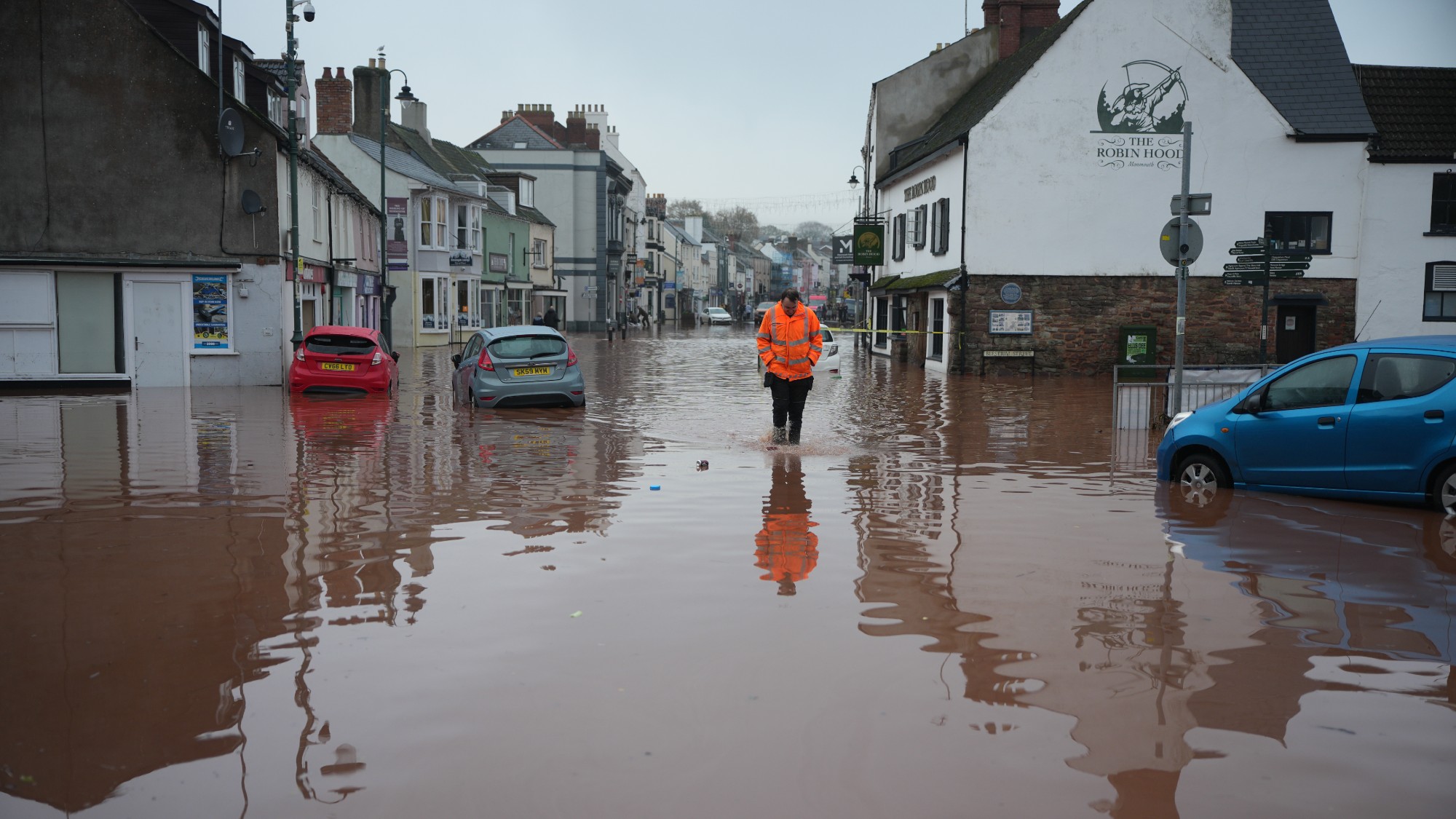The EPA wants to green-light approval for a twice-banned herbicide
Dicamba has been found to harm ecosystems


The Environmental Protection Agency wants to reallow the use of dicamba as a commercial weed killer. The proposal comes despite the herbicide having been blocked twice by federal courts because of its potential for causing ecological damage.
Try, try, try again
Dicamba has been a commonly used weed killer for the past 50 years, but its usage increased after 2016 when agricultural giant Monsanto genetically engineered crops to be resistant to it. This allowed farmers to spray the crops with the herbicide and have only the weeds die. The EPA also approved conditional registrations of dicamba-based herbicides.
However, environmental groups sued the EPA for its approval of dicamba because of the weed killer's potential to "drift away from the intended target, especially during warmer temperatures, and harm neighboring crops, nearby ecosystems and rural communities," said The Washington Post. As a result, the U.S. Court of Appeals for the Ninth Circuit ruled against the EPA and vacated the herbicide's registration. The court noted the EPA "substantially understated risks that it acknowledged and failed entirely to acknowledge other risks," of dicamba, said the 2020 court decision.
The Week
Escape your echo chamber. Get the facts behind the news, plus analysis from multiple perspectives.

Sign up for The Week's Free Newsletters
From our morning news briefing to a weekly Good News Newsletter, get the best of The Week delivered directly to your inbox.
From our morning news briefing to a weekly Good News Newsletter, get the best of The Week delivered directly to your inbox.
Following the decision, the EPA once again registered dicamba herbicides for use on genetically modified soybeans and cotton. Environmental groups challenged the EPA, and in 2024, a federal court vacated the registrations and prevented the sale of the herbicide for a second time. But the third time's the charm. The EPA conducted a review of dicamba and did not find any "dietary, aggregate, non-occupational or occupational risks of concern for potential human health exposure," said the 2025 review. The EPA did find, however, that the herbicide "does pose risks of concern" to certain plants. To combat the risks, the EPA is "proposing restrictions on how much of the chemical can be applied and when," said Reuters.
While the EPA's analysis found no risk to human health from dicamba, previous analysis showed "elevated risk of liver and intrahepatic bile duct cancers," as well as a specific type of leukemia, said a 2020 study published in the International Journal of Epidemiology. "None of these associations has been previously reported in the epidemiologic literature."
In the weeds
The EPA's proposal has gotten mixed reactions. Dicamba is a "critical crop-protection tool for soybean farmers, particularly in managing herbicide-resistant weeds," which can "quickly overtake fields, competing with soybeans for sunlight, water and nutrients and ultimately leading to significant yield losses," said a spokesperson for the American Soybean Association in a statement. In addition, the herbicide, "when used according to the label, can be used safely and successfully on-target," said the pharmaceutical company Bayer, which has created one of the dicamba herbicides mentioned in the proposal.
Those opposed have cited severe ecological risk. "If we allow these proposed decisions to go through, farmers and residents throughout rural America will again see their crops, trees and home gardens decimated by dicamba drift, and natural areas like wildlife refuges will also suffer," said Bill Freese, the science director at Center for Food Safety, in a statement by the Center for Biological Diversity.
A free daily email with the biggest news stories of the day – and the best features from TheWeek.com
The Trump administration has also come under fire with one claim that it is "hitting new heights of absurdity" in trying to bring back an herbicide that has been blocked twice, said Nathan Donley, the environmental health science director at the Center for Biological Diversity. Last month, Kyle Kunkler, who is a "former soybean industry lobbyist who has been a vocal proponent of dicamba," became the deputy assistant administrator of the EPA's Office of Chemical Safety and Pollution Prevention," said The New York Times.
Devika Rao has worked as a staff writer at The Week since 2022, covering science, the environment, climate and business. She previously worked as a policy associate for a nonprofit organization advocating for environmental action from a business perspective.
-
 Critics’ choice: The year’s top 10 movies
Critics’ choice: The year’s top 10 moviesFeature ‘One Battle After Another’ and ‘It Was Just an Accident’ stand out
-
 The small Caribbean island courting crypto billions
The small Caribbean island courting crypto billionsUnder the Radar Crypto mogul Olivier Janssens plans to create a libertarian utopia on Nevis
-
 Political cartoons for December 21
Political cartoons for December 21Cartoons Sunday’s political cartoons include Christmas movies, AI sermons, and more
-
 Crest falling: Mount Rainier and 4 other mountains are losing height
Crest falling: Mount Rainier and 4 other mountains are losing heightUnder the radar Its peak elevation is approximately 20 feet lower than it once was
-
 How will climate change affect the UK?
How will climate change affect the UK?The Explainer Met Office projections show the UK getting substantially warmer and wetter – with more extreme weather events
-
 The UK’s surprising ‘wallaby boom’
The UK’s surprising ‘wallaby boom’Under the Radar The Australian marsupial has ‘colonised’ the Isle of Man and is now making regular appearances on the UK mainland
-
 The Southern Ocean is holding in a ‘burp’
The Southern Ocean is holding in a ‘burp’Under the radar The heat from the past can affect the future
-
 Builders return to the stone age
Builders return to the stone ageUnder the Radar With brick building becoming ‘increasingly unsustainable’, could a reversion to stone be the future?
-
 Megabatteries are powering up clean energy
Megabatteries are powering up clean energyUnder the radar They can store and release excess energy
-
 The Earth is getting darker
The Earth is getting darkerUnder the radar The planet’s reflectivity is out of whack
-
 Scientists want to use enhanced rock weathering to cool the Earth
Scientists want to use enhanced rock weathering to cool the EarthUnder the radar Rock dust could trap atmospheric carbon
